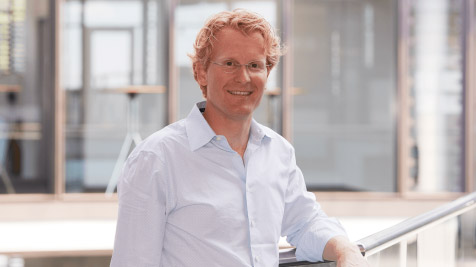Meet our Director: Lars Steinmetz

Lars is the director of the Life Science Alliance.
With his joint position as a Senior Scientist in the Genome Biology Unit at EMBL and Professor of Genetics at Stanford, Lars has experienced the benefits of transatlantic science and is the bridge between the two institutions. We caught up with him to hear more about what motivated him to start the Alliance, his career as a transatlantic scientist and what we are looking for in our bridging excellence fellows.
What is the major highlight in your career between EMBL and Stanford?
One of the highlights is definitely exposure to leading students and scientists. By working at two institutions, I have been really lucky to have that level of expertise and intellect to tap into. Another highlight that I’ve benefitted from is access to novel technology – either technologies that we have worked on or technologies that have been developed by other talented researchers. Being able to use these technologies at a very early stage is a great privilege.
What motivated you to start the Life Science Alliance?
Over the past 16 years, I’ve benefitted from some great experiences at both EMBL and Stanford. So my incentive behind establishing the Life Science Alliance was to take these opportunities and extend them to other researchers. I think being able to tap into two world-leading institutions, that are doing biological research, that have great networks and slightly different mentalities of how to approach science, provides a great opportunity to integrate the best of two different worlds. By bringing EMBL and Stanford together, you can take the positive aspects and shape them into something that is stronger than what you could have at any one place.
On top of that, I feel like science is becoming a lot more global, a lot more collaborative, and a lot more international. Scientists want to be versed in the research cultures of different countries, especially if they move in their careers. I wanted to set up a training program, where we can educate and train the next generation of international scientists. These scientists would not only be able to leverage the benefits of the two institutions but also be able to navigate within the culture of these unique environments.
“These fellows will be using cutting-edge technologies, working in a collaborative, open fashion and forging new paths in territory that is so far unexplored. This is not your standard postdoc.”
What are you excited about for the Life Science Alliance?
I’m really looking forward to the inaugural class of postdocs who we will recruit in the launch of our Bridging Excellence Fellowships. I really think we will attract a high level of talent and attract postdocs who think outside the box. We will be looking for individuals who are not only capable of working on some of the most important scientific problems, using some of the most advanced technologies on the planet, but who also have this open mind-set to operate across the two institutions. These fellows will be using cutting-edge technologies, working in a collaborative, open fashion and forging new paths in territory that is so far unexplored. This is not your standard postdoc. This is not going to be somebody who wants to turn the crank on an existing project. This is somebody who really thinks globally, who addresses problems, who will have an impact in the world and somebody who is willing and interested to take the top ingredients and to develop something that is novel. So I’m looking forward to meeting this group of interesting people and having some great new researchers in the Alliance.
What is the benefit of joining the Life Science Alliance?
The Life Science Alliance gives you access to great researchers at both institutions and allows you to do science that you otherwise couldn’t. There are several examples of projects in my own lab that we couldn’t have done without access to collaborators, to technologies, or even the mindset of how to operate and do science at the two institutions. If you want to realize to potential of your research and of your science, try out a collaboration with an Alliance member at the other institution. I think one thing you will notice, even from just starting a conversation, is that you’ll find things that you can do together that you would never have dreamed of by yourself.
If you are interested in joining us as a member of the Life Science Alliance, or you would like to know more about our Bridging Excellence Fellowships, you can follow us on Twitter @LiSciAlliance or get in touch with us via email.